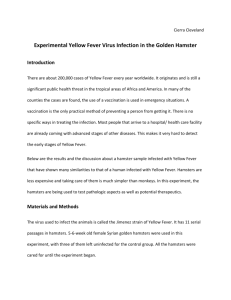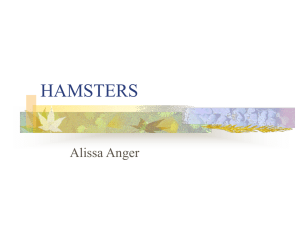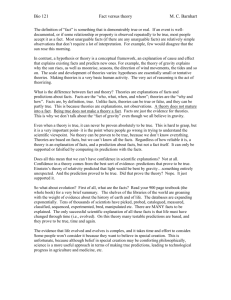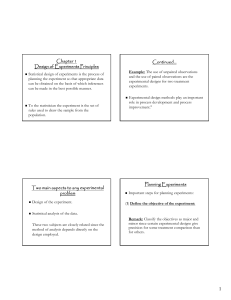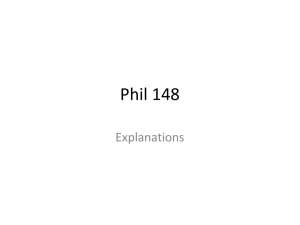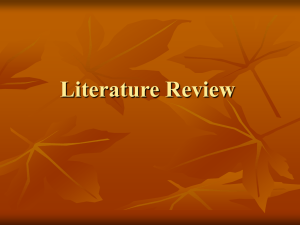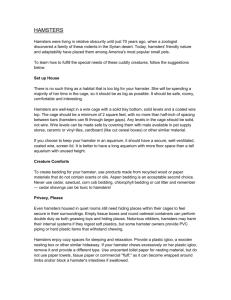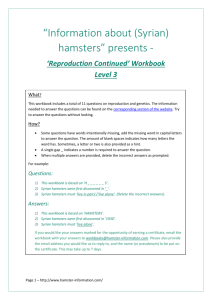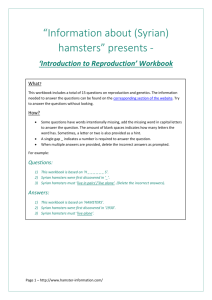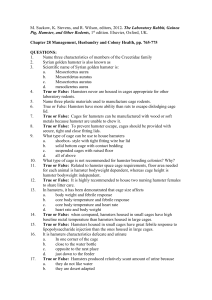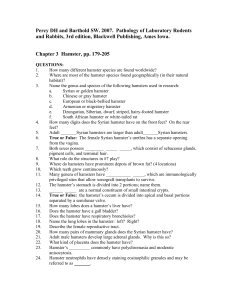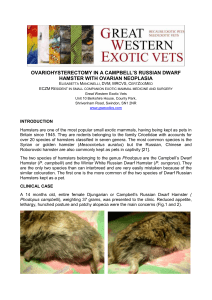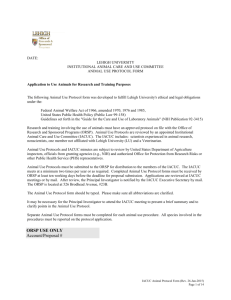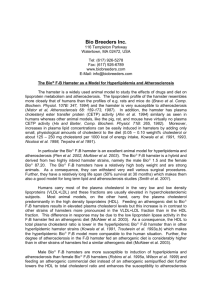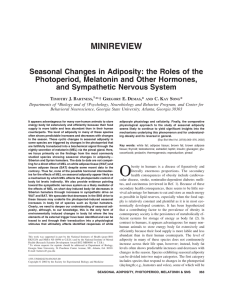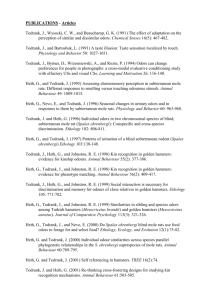Topic 1, Day 5
advertisement
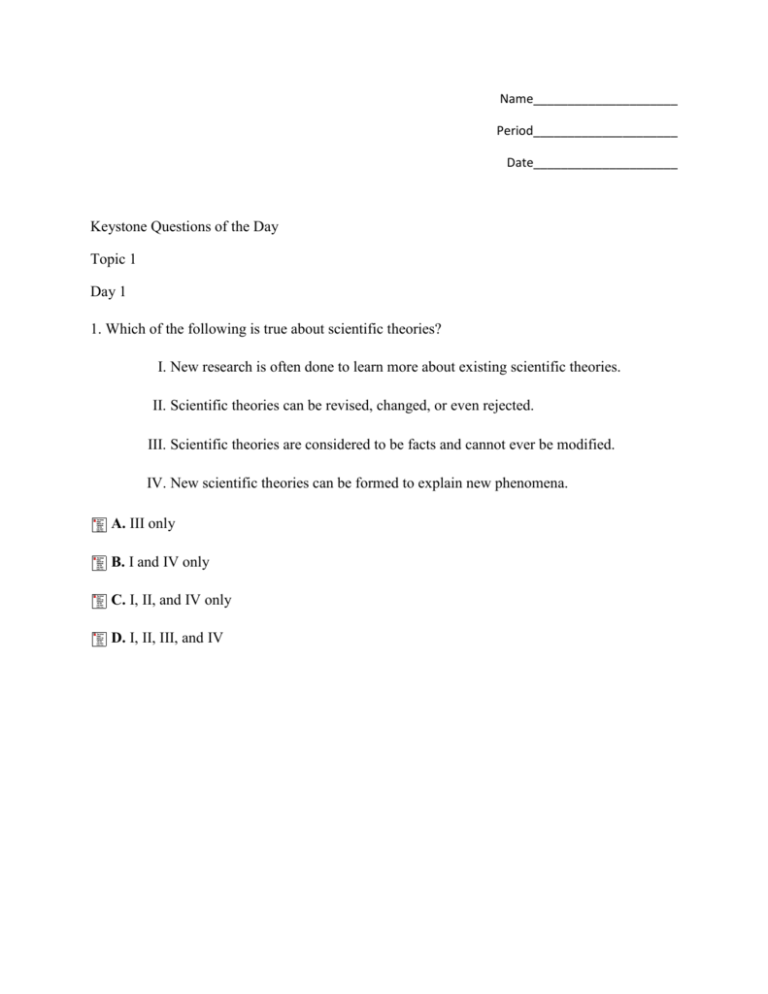
Name_____________________ Period_____________________ Date_____________________ Keystone Questions of the Day Topic 1 Day 1 1. Which of the following is true about scientific theories? I. New research is often done to learn more about existing scientific theories. II. Scientific theories can be revised, changed, or even rejected. III. Scientific theories are considered to be facts and cannot ever be modified. IV. New scientific theories can be formed to explain new phenomena. A. III only B. I and IV only C. I, II, and IV only D. I, II, III, and IV 2. Science can best be defined as A. the construction of testable explanations and predictions about the natural world through the use of evidence. B. the study of the economic and social structure of human society through the use of public opinion. C. the development of new technologies and products in order to promote the interests of public companies. D. the construction of explanations and predictions about any topic through the use of biased opinions. Day 2 1. A biologist conducted an experiment to determine the rate at which DNA mutations occur. The biologist was careful to record the steps of her experiment, as well as her observations and results. What should the biologist do next? A. Report her results in a scientific journal. B. Ask the local newspaper to publish her results. C. Hide her results from other scientists so that they won't steal her idea. D. Come up with a new hypothesis that she can test. 2. Which of the following is a true statement about science? A. Scientific ideas are able to be modeled during investigations. B. Scientific knowledge is continually being extended, refined, and revised. C. Science can be defined as a body of knowledge about the natural world. D. all of these Day 3 1. Since the beginning of time, man has always wondered about the origin of life. Formerly, people believed in spontaneous generation, or the theory that life could arise from non-living matter. Then, in 1668, an Italian scientist named Francisco Redi disproved spontaneous generation by performing an experiment which concluded that maggots are not found in meat where flies are prevented from laying eggs. This experiment shows that A. all scientific explanations are useless because nothing in the world is definite. B. all scientific explanations do not have to be based on experimental or observational evidence. C. all scientific explanations are definite and cannot be changed regardless of experimental results. D. all scientific explanations are tentative and subject to change or improvement. 2. . Dr. Paul discovers a new chemical that he hypothesizes will increase energy levels in hamsters. He designs an experiment to test his hypothesis. Dr. Paul separates 12 hamsters into two equal groups. He gives one group of hamsters the chemical but does not give the chemical to the other group. He keeps everything else about the hamsters' living environment the same. Over the next month, Dr. Paul measures the time that the hamsters spend running on their exercise wheels each day. He then calculates averages for these measurements, which are shown in the table below. Week 1 Week 2 Week 3 Week 4 Average Time Spent on Wheel by Hamsters Given Chemical 4.4 hours/day 5.1 hours/day 5.6 hours/day 5.3 hours/day Average Time Spent on Wheel by Hamsters Not Given Chemical 3.2 hours/day 2.5 hours/day 2.8 hours/day 3.0 hours/day The data that Dr. Paul collects during his experiment A. are not a valid because experiments cannot be done on living organisms. B. are not valid because Dr. Paul did not use a control group in his experiment. C. contradict his hypothesis that the chemical will increase energy levels in hamsters. D. support his hypothesis that the chemical will increase energy levels in hamsters. Day 4 1. Which of the following is an example of a direct observation? A. viewing cell division B. estimating how many bears live in an area based on the amount of bear skat (waste) in the same area C. collecting online surveys D. interviewing witnesses to an automobile accident 2. Which of the following reasons best explains why a scientist would want to replicate Gregor Mendel's pea plant experiment? A. to test the predictions of current theories B. to explain recently observed phenomena C. to discover new aspects of the natural world D. to test the conclusions of prior investigations Day 5 1. A scientist counted the average number of plants found in a square kilometer of land at different latitudes. She recorded her results in the table below. Average Number of Latitude Plant Species per Square Kilometer 75° 300 60° 700 45° 4,800 30° 7,200 15° 11,000 0° 11,500 Which of the following new questions would this data lead to? A. How many species of plants grow in high elevation environments? B. What causes different types of plant species to evolve? C. At what time of the year do most species of plants reproduce? D. Why do more plant species live at low latitudes rather than high latitudes? 2. Janice is studying patterns of water usage. She has collected the following data: Activity Average Amount of Water Used by American Households (L) Bathing (per bath) 130 Showering (per minute) 19 Flushing toilet (per flush) 19 Washing clothes (per load) 72 Washing dishes (per load) 61 Which of the following is an inference that can be made from this data set? A. On average, it takes 19 L of water to flush a toilet. B. Six minute showers are better for the environment than baths. C. If Americans were to wash their clothes and dishes by hand, they would conserve more water. D. Bathing requires more water than washing a load of clothes.

